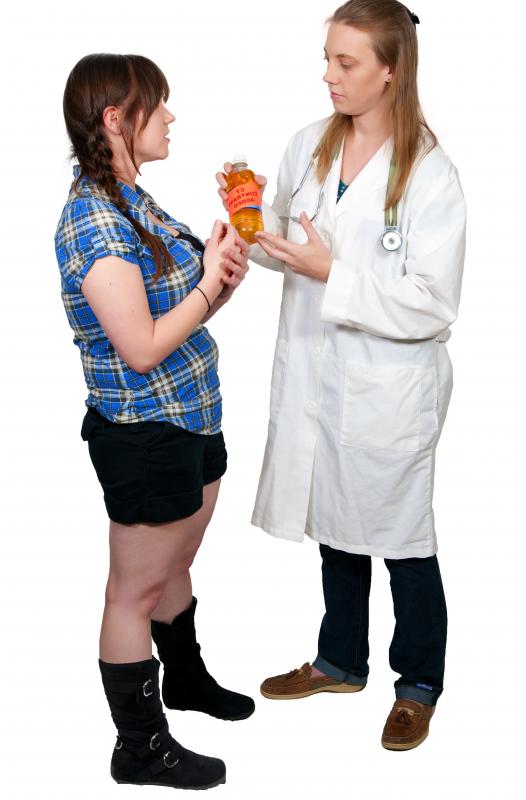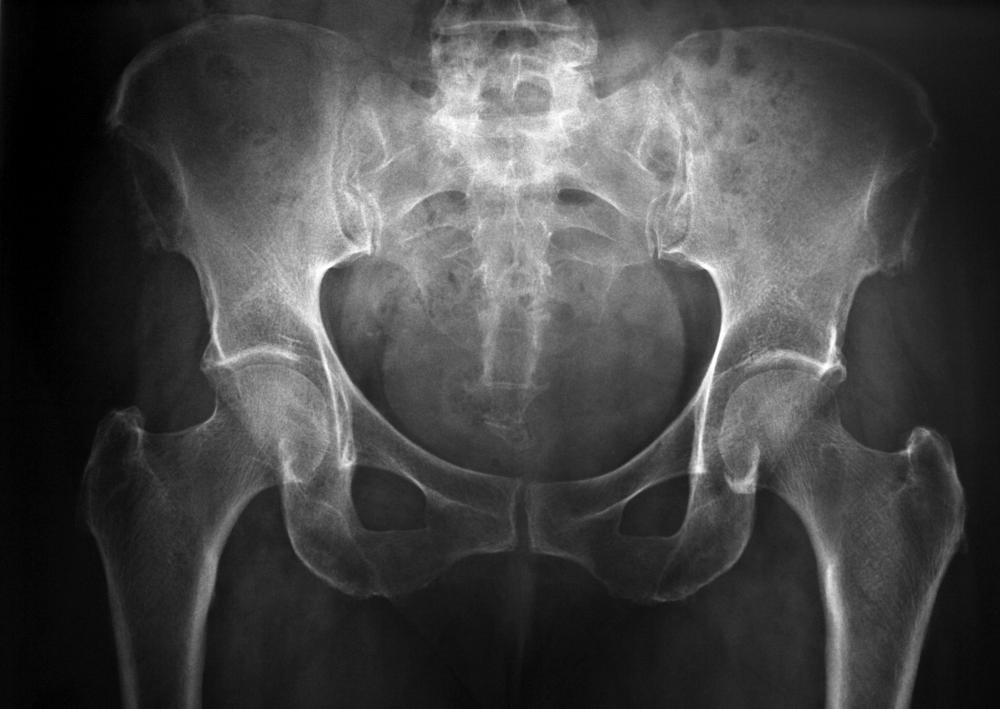At TheHealthBoard, we're committed to delivering accurate, trustworthy information. Our expert-authored content is rigorously fact-checked and sourced from credible authorities. Discover how we uphold the highest standards in providing you with reliable knowledge.
What Is a CT Scan with Barium?
A computerized tomography (CT) scan with barium is a medical procedure in which portions of a person’s stomach and bowels are chemically highlighted with a barium sulfate solution for easy x-ray viewing. In most cases, patients must drink a liquid barium compound at set intervals before the procedure, though the compound can also be introduced with an enema if necessary. Barium acts as a contrast agent, and causes the stomach and intestines to show up better on the scans. This usually contributes to more accurate diagnoses of what are often complex intestinal conditions.
Doctors frequently order computer tomography scans in order to get a sort of “inside view” of what is happening beneath the skin. CTs are essentially enhanced x-rays. A traditional x-ray is a single image captured from a single angle. CT scans use the same basic technology, but capture images from multiple angles that can then be compiled into a three-dimensional image. A CT scan with barium is almost always a scan of the stomach or digestive tract.

There are many different reasons for having a CT scan with barium, though cancers and abnormal growths in the stomach and intestines are among the most common. The presence of barium can help shed light on even the faintest abnormalities. A standard CT scan is often very useful for initial diagnosis, but barium-enhanced scans go even further in helping doctors identify unusual growths and monitor disease progress. In almost all cases, a patient will have a standard, non-contrast CT before undergoing a CT scan with barium.

Liquid barium helps enhance abdominal and pelvic scans by coating the lining of the stomach and the intestines. The compound is not a permanent dye, and it usually leaves the body relatively quickly after entering. Its main benefit is in how it interacts with the CT scanner emissions. When present in significant enough doses, it will often block the rays outright, resulting in an illuminated, clarified picture outlining the organs and any problem areas.

Barium is not without its side effects, however. Patients ordered to undergo a CT scan with barium often report that drinking barium is the hardest and most uncomfortable part of the procedure. This is in part because of just how much must be consumed, as well as its chalky, thick texture and generally unpleasant taste. Its side effects, which include nausea and loose bowels, can be long-lasting. The scan itself, in contrast, is usually quite fast and painless.

A patient undergoing a CT scan with barium is typically instructed to drink large quantities of the liquid compound at set intervals leading up to the procedure, often several cartons’ worth. All other foods and beverages must usually be avoided, even water. Anything but barium in the stomach can skew the results.
In rarer cases, barium can also be directly inserted into the bowels through an enema. This procedure is most commonly ordered for CT scans focused on the lower intestinal tract. Due to the discomfort they cause most patients, these types of CT scans are usually only prescribed when the results from other tests, such as colonoscopies, have proved inconclusive.
AS FEATURED ON:
AS FEATURED ON:














Discussion Comments
Anyone who has had to drink a bunch of barium knows quite well how bad that stuff can taste -- it is the worst part of the process. But, what alternatives are there? Are any under development?
Post your comments